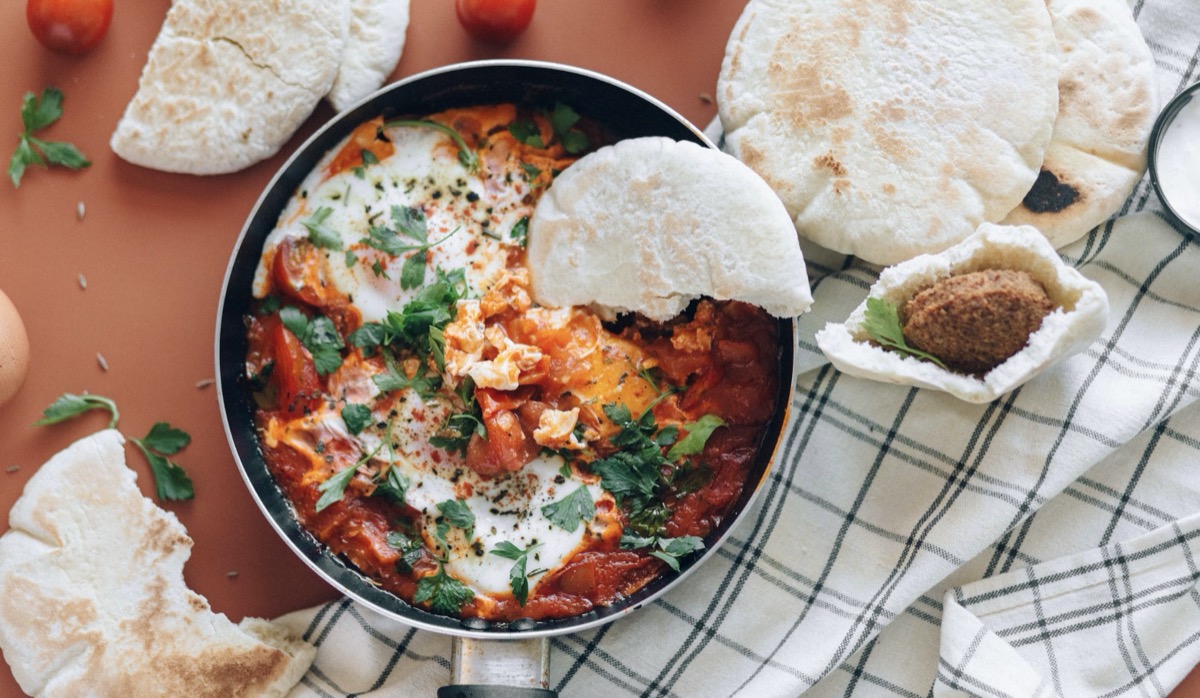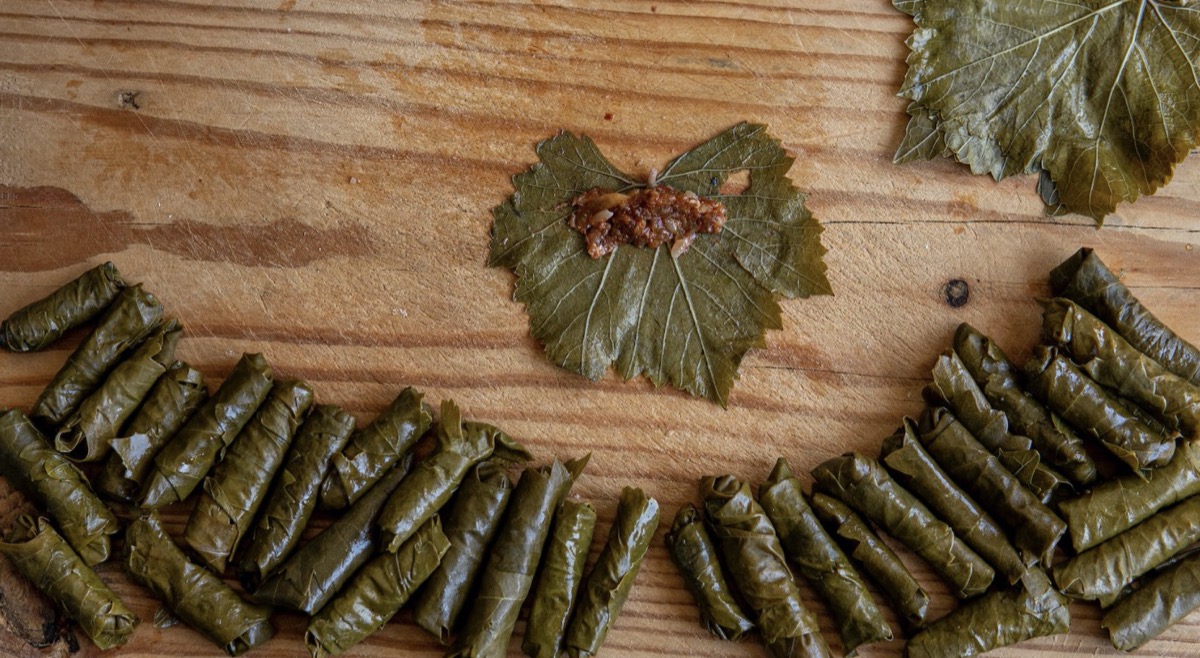Balance Around the World

As a practical and realistic nutritionist, there is absolutely nothing I love more than finding the health in cultural foods from around the world.
I’m Arab American and when I first got into my health and fitness “journey” back in 2017, I dove too deep. I deemed my mom’s Palestinian food as too high in calories from the olive oil and swore off the rice it was served with as too high in carbs. If I ordered Thai food, I did it sans the rice. I absolutely never made Italian or went out to Italian restaurants because… pasta… right?
And if I was ever caught eating any of these foods, you better bet I had no control over it and was in full binge mode.
I tell this story to say, I get it. I lived it. Cultural foods are and always will be a huge part of my life. And they will have always molded my balanced approach to nutrition that I have today.
Today we’re going to dive into 4 different cultures and identify the nutritional benefits in not only what they’re eating but also how they’re eating. Different countries and cuisines will use different spices and foods but they’ll also practice unique habits and behaviors around mealtime that help them maintain a healthy relationship with food and proper nourishment for their bodies.
Here are the benefits of cultural foods from some regions of the world:
1. The Middle East/Mediterranean
The Mediterranean and the Middle East have similar staples in their diet using things like whole grains, olive oil, fresh fruit and veggies, high quality fish and meat, high amounts of fiber, nuts, healthy fats, and more.
What: Freekah
Freekah is an ancient grain local to the Middle East that’s loaded with fiber and protein. Think quinoa, but more nutrient dense. It’s rich in iron, calcium, and zinc. It’s common to eat Freekah in soup or rice on the side with protein and colorful veggies. You might also find it thrown into salads similar to quinoa.

How: Lunch is Dinner
Middle Eastern and Mediterranean cultures often eat lunch as their biggest meal of the day. Studies have shown that loading your calories earlier in the day can help to optimize energy levels, metabolic health, digestion, sleep, and reduce the risk for overeating. It doesn’t hurt to try eating your largest meal at lunch time and see how if it benefits you.
2. Thai Cuisine
Thai food uses a variety of vegetables, spices, and natural ingredients that are known to be great for your immune and overall health.
What: Papaya
A popular ingredient used in Thai cuisine is Papaya. You might see this in the popular green papaya salad. An uncooked green papaya salad is known to aid in digestion because of a digestive enzyme called papain. It also has anti-inflammatory properties and can render relief from constipation with its fiber content.
How: Slow & Steady
It’s customary in Thai culture to eat slowly when eating in large groups. Slowing down, chewing your food, and enjoying the overall experience when you’re eating can improve digestion, nutrient absorption, and help you recognize fullness cues faster and clearer. It doesn’t hurt to try putting your fork down in between bites and chewing your food to completion and see how it benefits you.
3. India
Indian food is traditionally packed with flavor and some of the world’s most nutrient dense spices.
What: Turmeric & Cardamom
These spices (and many more) are recurring staples in Indian cuisine. Turmeric today is promoted as an aid to arthritis, digestive disorders, respiratory infections, allergies, liver disease, depression, as an overall anti-inflammatory and so much more. Cardamom has a high level of antioxidants that have been linked to lower blood pressure in some studies and also comes with anti-inflammatory and digestion benefits.
How: Ayurveda
Ayurveda translates to “the science of life” and is an alternative way to manage health to medicine. It focuses on physical, mental, and spiritual health through things like the practice of yoga, massage, and using food as medicine. Ayurveda is more complex than just taking herbs when you’re feeling sick, while that may be a component of it, there are much more science-backed processes in the holistic approach to medicine. Something you can try today is implementing 5–10 minutes of yoga daily to manage stress levels and/or add a variety of spices to your next dinner.

4. France
French food tends to be simple, practical, yet flavorful. You might think of croissants, cheese, and french pastry, but their meals and behaviors around food are actually quite balanced in nature and mindful in practice.
What: Ratatouille
I have to admit, choosing a French food to highlight was tough because there was a lot I wanted to show the balanced side of, but I chose ratatouille because with every cultural cuisine around the world, there are always veggies to be found somewhere. Ratatouille is a colorful combination of roasted eggplant, tomatoes, squash, onions and bell peppers, with fresh herbs. The more color you have in a dish, the more nutrients it’s paired with. Ratatouille can be put on the side of any rice, pasta, and meat combo to make it more balanced in nature.
How: Small & Free
The French have no restrictions on food. Bread, butter, cheese, pastries, pasta, meat,
grains, oil, it all fits. With this mindset, they get to live out food freedom and a nonrestrictive diet lifestyle to its fullest. In order to do this however and maintain their health, the French keep their portions smaller than a standard American portion. Similar to the neighboring Mediterranean region, the French eat their biggest meal in the middle of the day with a more modest breakfast and dinner. Their lunch meal is often 3 courses starting with a soup or salad starter. Research shows that starting with soup or salad before a meal can help manage blood sugar levels and appetite control. So when the other courses come around, it’s easier to manage your portion size. You can try starting your next meal with a soup or salad and having an “all food fits” mindset at your main course.
There are so many beautiful cultures with balanced and nutrient rich cuisines that we didn’t touch on today. But if you got anything from this, I hope it’s that your family’s food does fit, you can travel and enjoy different cuisines, food freedom is a healthy practice, and it never hurts to learn from other people. I know I’m going to try practicing eating a bigger lunch and starting with a soup or salad! What are you going to do?
With my clients, I focus on shifting habits without restricting or counting calories to achieve sustainable weight loss or weight maintenance. We use practical nutrition so we can live life and feel our best!
Follow me on Instagram @Practical.Nutritionist and TikTok, or subscribe to my YouTube channel to stay up to date on the latest health tips and recipes! Or find me here: livingwithleena.com
If you’re ready to dive deep into your habits and feel confident about your choices surrounding food again, book a free consultation with me here!
